The Ultimate 10-Day Europe Itinerary for First-Time Travelers
This blog post offers an engaging 10-day itinerary for first-time travelers to Europe, highlighting must-see destinations like Paris, Rome, and Amsterdam. It includes detailed recommendations on iconic attractions such as the Eiffel Tower, the Colosseum, the Anne Frank House, and world-class museums like the Van Gogh Museum and the Rijksmuseum. The post also covers cultural insights, travel tips, and suggestions for must-try local foods, ensuring a comprehensive and unforgettable European adventure.
12/1/202412 min read


Hello, fellow travellers! 🌍 Are you ready to check Europe off your bucket list? For first-time travelers, deciding where to go and what to do can feel overwhelming – trust me, I’ve been there. But don’t worry! I’ve mapped out a 10-day adventure through Paris, Rome, and Amsterdam, packed with iconic sights, mouthwatering food, and cultural gems. Let’s dive in!
Days 1-3: Falling in Love with Paris
Foods to Try
Ah, Paris – the city where romance fills the air, and every street feels like a movie set. Your journey begins here, and it’s as magical as you imagine. Start your mornings with a flaky croissant from a local boulangerie; there’s nothing quite like tearing into that buttery, golden pastry with the sound of Paris waking up around you. For a true sweet treat, grab some macarons – these delicate cookies are as much a feast for the eyes as they are for your taste buds.




Places to Visit
1. The Eiffel Tower


Paris is home to some of the world’s most iconic landmarks, and you don’t want to miss them. Climbing the Eiffel Tower should be your first stop – the panoramic views from the top are breathtaking, especially at sunset when the city glows.
The Eiffel Tower, an enduring symbol of Paris and France, was built for the 1889 Exposition Universelle (World’s Fair) to celebrate the 100th anniversary of the French Revolution. Designed by engineer Gustave Eiffel, the tower was initially met with criticism, as many Parisians found it an eyesore. Despite the backlash, it stood as a marvel of modern engineering and held the title of the world’s tallest structure until 1930.
Today, the Eiffel Tower represents French innovation and artistic spirit. It attracts millions of visitors annually, offering stunning views of Paris from its observation decks. More than just a landmark, it has become a cultural icon, featured in films, literature, and art, embodying the romance and elegance associated with the City of Lights.
2. The Louvre




The Louvre is next on the list. Whether you’re an art aficionado or just curious about the hype, seeing the Mona Lisa up close is an experience in itself.
The Louvre, located in the heart of Paris, is the world’s largest art museum and a historic landmark that attracts millions of visitors each year. Originally built as a fortress in the 12th century, it later became a royal palace before being transformed into a public museum in 1793.
Inside its iconic glass pyramid entrance, you’ll discover over 35,000 works of art spanning ancient civilizations, the Renaissance, and beyond. Highlights include the enigmatic Mona Lisa, the graceful Venus de Milo, and the dramatic Winged Victory of Samothrace. Beyond these masterpieces, the museum’s galleries house treasures from ancient Egypt, Mesopotamia, and the Islamic world.
The Louvre covers a staggering 782,000 square feet, so plan your visit strategically to avoid being overwhelmed.A visit to the Louvre isn’t just about admiring art – it’s a journey through the history and creativity of humanity. Don’t forget to snap a photo of the iconic glass pyramid before you leave!
3. A Siene River Cruise
A Seine River cruise is one of the most enchanting ways to experience Paris. Gliding along the gentle waters of the Seine, you’ll see the city’s most iconic landmarks from a unique perspective. Daytime cruises offer stunning views under the Parisian sun, while evening cruises let you bask in the glow of illuminated monuments, earning Paris its nickname, The City of Lights.
As you sail, expect to pass under historic bridges like Pont Neuf, the oldest bridge in Paris, and alongside architectural wonders like the Eiffel Tower, the Louvre, and the magnificent Notre-Dame Cathedral. Many cruises also include guided commentary, sharing fascinating details about the city’s history, culture, and landmarks.
For a more luxurious experience, opt for a dinner cruise. Savor gourmet French cuisine as you watch the city unfold around you, with sparkling wine or champagne in hand.
Whether you’re traveling solo, with friends, or as a couple, a Seine River cruise is an unforgettable way to soak in the beauty, romance, and history of Paris. Don’t forget your camera – the views are picture-perfect!


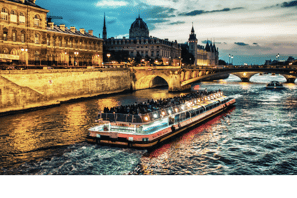

4. Montmartre


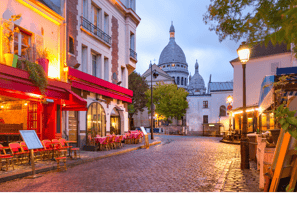

While you’re exploring, don’t forget to take a detour to Montmartre, the artsy district that once inspired the likes of Picasso. Wandering its cobbled streets, you’ll stumble upon hidden gems, quaint cafes, and Sacré-Cœur Basilica, which offers some of the best views of Paris.
Montmartre is one of Paris’s most iconic neighborhoods, known for its artistic heritage, bohemian spirit, and breathtaking views of the city. Perched atop a hill in the 18th arrondissement, this area was once home to legendary artists like Picasso, Monet, and Van Gogh, who drew inspiration from its lively streets and vibrant culture.
As you wander through Montmartre’s cobblestone alleys, you’ll stumble upon quaint cafes, quirky boutiques, and street artists showcasing their work. The Place du Tertre is a must-visit – this bustling square is filled with painters and caricature artists, capturing the neighborhood’s creative essence.
At the summit, you’ll find the stunning Sacré-Cœur Basilica, a white-domed masterpiece offering panoramic views of Paris from its steps. Inside, the basilica is equally impressive, with its grand mosaics and serene ambiance.
Don’t miss exploring the lesser-known corners of Montmartre, like the whimsical "I Love You Wall" (Le Mur des Je T’aime), which features "I love you" written in over 250 languages. You’ll also spot the charming windmills of Moulin de la Galette and perhaps even the famed Moulin Rouge nearby, if you venture downhill.
Montmartre feels like a village within the city, offering a mix of history, culture, and romance that’s quintessentially Parisian. Whether you’re a history buff, an art lover, or simply a dreamer, Montmartre will capture your heart.
Tips for when Visiting Paris
Getting around Paris is a breeze thanks to its Métro system. A tip for first-timers: always keep a stash of coins or small bills for tickets. Paris offers a variety of transportation options to help travelers get around easily and affordably. The Paris Metro is a comprehensive network of subway lines connecting most areas of the city and offers multiple pass options that offer discounts and convenience for visitors.
Choosing the right pass depends on the length of your stay, you travel frequency and the areas you plan to visit. For shorter stays or infrequent trips, you can have a look at options like the Navigo Easy Card, a pre-loaded ticket, a single-day pass, or the Paris Visite Pass for 2,3, or 5 days. With these options, navigating Paris is straightforward and stress-free.
And when it comes to choosing where to stay, aim for central neighborhoods like the Marais or the Latin Quarter – both are full of charm and within walking distance of major attractions. Being able to walk or bike to your destinations gives you a unique chance to take in the beauty you are surrounded by.
Days 4-6: Living History in Rome
Next stop: Rome, the Eternal City! The moment you set foot here, it feels like stepping back in time. This is a city where ancient ruins sit side by side with bustling piazzas, and every corner has a story to tell.
Places to Visit
1. The Colosseum
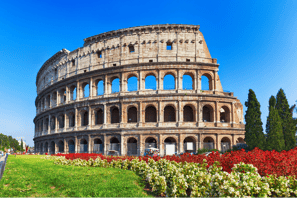

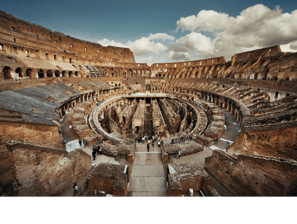

Start your Roman adventure with the Colosseum. Walking through its ancient arches, you can almost hear the roar of the crowd and the clashing of gladiator swords.
The Colosseum, also known as the Flavian Amphitheatre, is one of Rome’s most iconic landmarks and a must-see for any visitor. Completed in 80 AD under Emperor Titus, this massive structure was the largest amphitheater ever built and could hold up to 50,000 spectators. It served as a grand stage for gladiatorial battles, public executions, and other forms of entertainment designed to showcase the might and culture of ancient Rome.
This architectural marvel represents the ingenuity of Roman engineering, with its intricate network of underground tunnels and elevators, which were used to hoist wild animals and gladiators into the arena. Despite suffering damage from earthquakes and stone looting over the centuries, the Colosseum remains a powerful symbol of Rome’s rich history and resilience.
For Romans, the Colosseum is more than a relic of the past; it embodies the enduring legacy of their ancestors. Today, it serves as a site of cultural pride and remembrance. Each year, the Colosseum lights up in gold to mark events like the abolition of the death penalty, signifying its continued relevance to contemporary values.
2. The Roman Forum

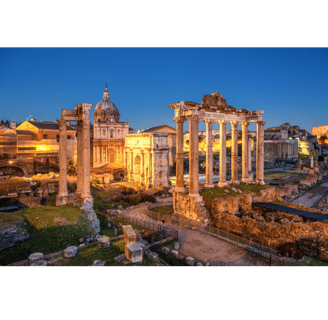

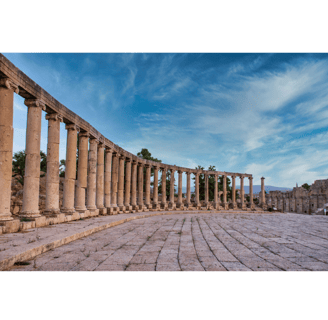
From there, head to the Roman Forum – once the center of political and social life in ancient Rome. It’s incredible to imagine how much history these stones have witnessed.
The Roman Forum, nestled between the Palatine and Capitoline Hills, was the political, social, and religious heart of ancient Rome. This sprawling complex of ruins was once the bustling center of Roman life, home to markets, temples, and government buildings. It played host to everything from triumphant processions to public speeches, embodying the grandeur and organization of the Roman Empire.
Dating back to the 7th century BC, the Forum evolved over centuries as successive leaders added their marks. Key structures include the Temple of Saturn, one of the oldest temples in the Forum; the Curia, where the Roman Senate convened; and the Arch of Titus, which commemorates Roman victories. Walking through the Forum, you can also explore the remains of basilicas, where legal and business activities took place, and the Rostra, the platform for public oration.
3. St. Peter's Basilica
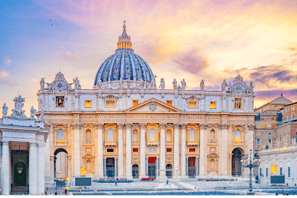

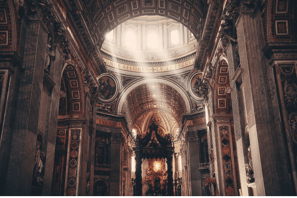

No trip to Rome is complete without a visit to Vatican City. St. Peter’s Basilica is jaw-dropping in its scale and beauty, and Michelangelo’s Sistine Chapel ceiling will leave you speechless.
St. Peter’s Basilica, located in Vatican City, is one of the most renowned landmarks in the world and a spiritual epicenter for millions of Catholics. Built on the site where Saint Peter, one of Jesus’ apostles and the first Pope, is believed to be buried, this iconic church reflects the grandeur and devotion of the Renaissance era. Construction began in 1506 under Pope Julius II and spanned over 120 years, involving celebrated artists like Michelangelo, who designed the iconic dome, and Bernini, who crafted the stunning St. Peter's Square.
As you step inside, the sheer scale and beauty of the basilica are breathtaking. Its intricate mosaics, marble floors, and the towering dome draw your eyes upwards, inspiring awe. Highlights include Michelangelo’s Pietà, a moving sculpture of the Virgin Mary cradling Jesus, and the ornate Baldachin by Bernini that marks Saint Peter’s tomb beneath the altar.
St. Peter’s Basilica isn’t just a religious site; it’s a masterpiece of art, architecture, and history. Pilgrims from around the globe visit to attend papal ceremonies, climb the dome for panoramic views of Rome, and reflect on its profound spiritual significance.
Don’t forget to toss a coin into the Trevi Fountain before you leave – legend has it that doing so guarantees your return to Rome.
Foods to Try
And then there’s the food. Oh, the food. You haven’t lived until you’ve had a bowl of Carbonara in its birthplace. Unlike the creamy versions you might be used to, Roman Carbonara is all about simplicity: eggs, pecorino cheese, guanciale, and black pepper. Follow it up with some gelato – the pistachio flavor is my personal favorite – and you’ll understand why Italian cuisine is world-famous.




Tips for when visiting Rome
While Rome is walkable, its buses and metro can save your feet after a long day of sightseeing. For accommodations, the neighborhoods around Piazza Navona or Trastevere are ideal – central, atmospheric, and filled with delicious trattorias. One thing to keep in mind: dress modestly when visiting churches or religious sites. Italians take this seriously, and it’s a sign of respect.
Days 7-10: Exploring Amsterdam’s Charm
Your journey wraps up in Amsterdam, a city known for its picturesque canals, vibrant culture, and laid-back vibes. There’s something so refreshing about wandering along the canals, with the sound of bike bells ringing in the distance.
Speaking of bikes, Amsterdam is a cyclist’s paradise. Renting a bike is a must – it’s the best way to explore the city like a local. Don’t worry if cycling isn’t your thing; Amsterdam’s tram system is efficient and easy to use.
Places to Visit
1. The Anne Frank House
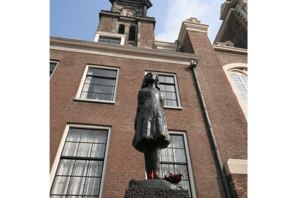


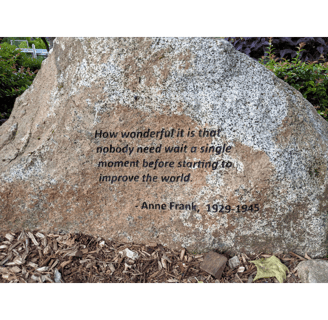
Start your exploration at the Anne Frank House. It’s a deeply moving experience that gives you a glimpse into history you’ll never forget.
The Anne Frank House in Amsterdam is a deeply moving museum that preserves the hidden annex where Anne Frank, her family, and four others lived in secret during World War II. This annex, accessible through a hidden door behind a revolving bookcase, was their home for two years as they evaded Nazi persecution. It is here that Anne wrote her now-famous diary, which has since become a universal symbol of resilience and hope during dark times.
Anne's diary is on display, alongside photographs, artifacts, and interactive exhibits that shed light on her life and the struggles of those in hiding. The annex’s discovery in 1944 by the Nazis led to the deportation of its occupants, with Otto Frank being the sole survivor.
The Anne Frank House is located along the Prinsengracht canal in Amsterdam's Jordaan district, offering a reflective experience that connects visitors to a pivotal moment in history. Tickets must be purchased online in advance, as this is one of the city’s most popular attractions
2. The Van Gogh Museum
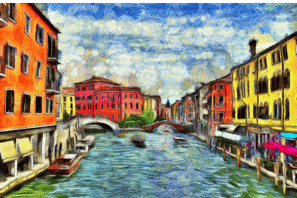

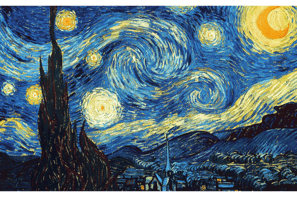

From there, head to the Van Gogh Museum, where you can see the world through the eyes of one of history’s most celebrated artists.
The Van Gogh Museum in Amsterdam is a celebration of the life and work of one of the most influential artists in history, Vincent van Gogh. Located in the Museumplein, this museum houses the largest collection of Van Gogh’s artwork, including iconic pieces like The Bedroom and Sunflowers. The museum offers a chronological journey through his artistic evolution, exploring his emotional struggles, innovative techniques, and relationships with fellow artists like Paul Gauguin.
Visitors can also view letters Van Gogh wrote to his brother Theo, gaining personal insight into the mind of the troubled genius. Engaging exhibits and multimedia presentations make this a captivating experience for art lovers of all ages.
3. Rijksmuseum
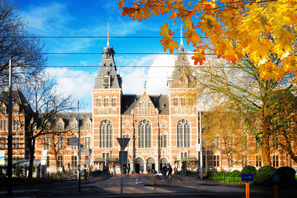

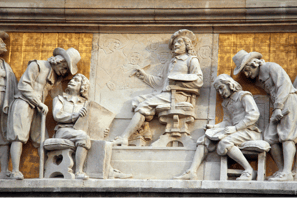

If you’re an art lover, the Rijksmuseum is another must-see, showcasing Dutch masterpieces like Rembrandt’s The Night Watch.
The Rijksmuseum, also located in Museumplein, is a grand tribute to Dutch art and history. This world-renowned museum boasts a vast collection of masterpieces from the Dutch Golden Age, including Rembrandt’s The Night Watch and Vermeer’s The Milkmaid. The museum’s galleries span over 800 years of Dutch history, featuring works from the Middle Ages to contemporary art.
Beyond paintings, the Rijksmuseum houses an extensive collection of historical artifacts, sculptures, and decorative arts, including intricate Delftware ceramics and the model ship collection in the maritime exhibits. The museum’s beautifully landscaped gardens are an attraction in themselves.
If you’re an art lover, the Rijksmuseum is another must-see, showcasing Dutch masterpieces like Foods to Try
Foodies will fall in love with Amsterdam’s snacks. Stroopwafels are a standout – these chewy caramel-filled waffles are best enjoyed warm from a street vendor. If you’re feeling adventurous, try herring served Dutch-style with onions and pickles. And for a cozy breakfast, you can’t go wrong with poffertjes, mini pancakes dusted with powdered sugar.
Tips for when visiting Amsterdam
When it comes to accommodations, the Jordaan neighborhood is a dream. It’s scenic, quiet, and filled with charming shops and cafes. Book your Anne Frank House tickets in advance – they sell out fast, and you won’t want to miss it.
Did you know that Amsterdam has more bikes than people? It’s true! With over 880,000 bikes, the city’s cycling culture is truly one-of-a-kind.






Final Tips for Your European Adventure
Pack light – Europe’s cobblestone streets are beautiful but not suitcase-friendly. Get a local SIM card or eSIM for maps and staying connected. And most importantly, embrace every moment! Whether it’s savoring a macaron in Paris, tossing a coin into the Trevi Fountain, or biking along Amsterdam’s canals, this trip is going to be unforgettable.
Are you ready to make your European dream a reality? Let me know in the comments which city you’re most excited to visit, and don’t forget to share your favorite travel tips too. Safe travels! 🌟
Explore
Join us for travel tips and adventures.
Discover
Connect
europeletstravel@gmail.com
© 2024. All rights reserved.